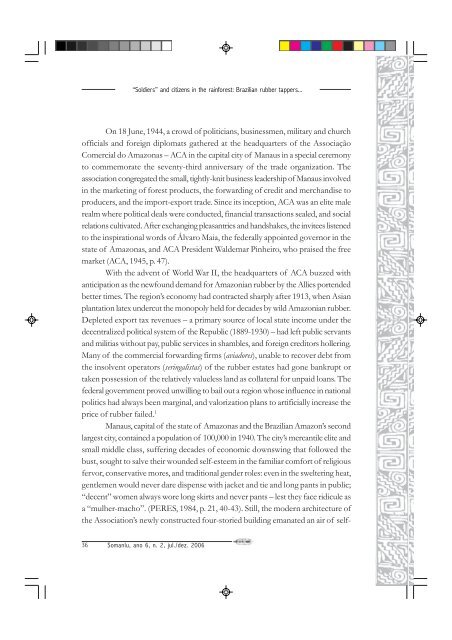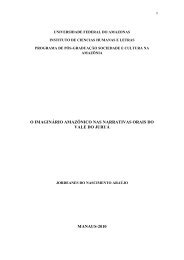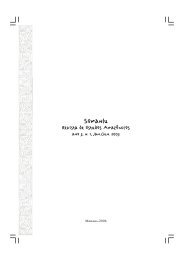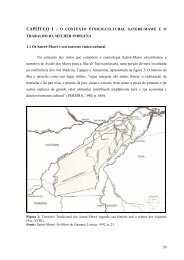somanlu jul dez 2006.pmd - Eventos - Ufam
somanlu jul dez 2006.pmd - Eventos - Ufam
somanlu jul dez 2006.pmd - Eventos - Ufam
You also want an ePaper? Increase the reach of your titles
YUMPU automatically turns print PDFs into web optimized ePapers that Google loves.
“Soldiers” and citizens in the rainforest: Brazilian rubber tappers...<br />
On 18 June, 1944, a crowd of politicians, businessmen, military and church<br />
officials and foreign diplomats gathered at the headquarters of the Associação<br />
Comercial do Amazonas – ACA in the capital city of Manaus in a special ceremony<br />
to commemorate the seventy-third anniversary of the trade organization. The<br />
association congregated the small, tightly-knit business leadership of Manaus involved<br />
in the marketing of forest products, the forwarding of credit and merchandise to<br />
producers, and the import-export trade. Since its inception, ACA was an elite male<br />
realm where political deals were conducted, financial transactions sealed, and social<br />
relations cultivated. After exchanging pleasantries and handshakes, the invitees listened<br />
to the inspirational words of Álvaro Maia, the federally appointed governor in the<br />
state of Amazonas, and ACA President Waldemar Pinheiro, who praised the free<br />
market (ACA, 1945, p. 47).<br />
With the advent of World War II, the headquarters of ACA buzzed with<br />
anticipation as the newfound demand for Amazonian rubber by the Allies portended<br />
better times. The region’s economy had contracted sharply after 1913, when Asian<br />
plantation latex undercut the monopoly held for decades by wild Amazonian rubber.<br />
Depleted export tax revenues – a primary source of local state income under the<br />
decentralized political system of the Republic (1889-1930) – had left public servants<br />
and militias without pay, public services in shambles, and foreign creditors hollering.<br />
Many of the commercial forwarding firms (aviadores), unable to recover debt from<br />
the insolvent operators (seringalistas) of the rubber estates had gone bankrupt or<br />
taken possession of the relatively valueless land as collateral for unpaid loans. The<br />
federal government proved unwilling to bail out a region whose influence in national<br />
politics had always been marginal, and valorization plans to artificially increase the<br />
price of rubber failed. 1<br />
Manaus, capital of the state of Amazonas and the Brazilian Amazon’s second<br />
largest city, contained a population of 100,000 in 1940. The city’s mercantile elite and<br />
small middle class, suffering decades of economic downswing that followed the<br />
bust, sought to salve their wounded self-esteem in the familiar comfort of religious<br />
fervor, conservative mores, and traditional gender roles: even in the sweltering heat,<br />
gentlemen would never dare dispense with jacket and tie and long pants in public;<br />
“decent” women always wore long skirts and never pants – lest they face ridicule as<br />
a “mulher-macho”. (PERES, 1984, p. 21, 40-43). Still, the modern architecture of<br />
the Association’s newly constructed four-storied building emanated an air of self-<br />
36 Somanlu, ano 6, n. 2, <strong>jul</strong>./<strong>dez</strong>. 2006






